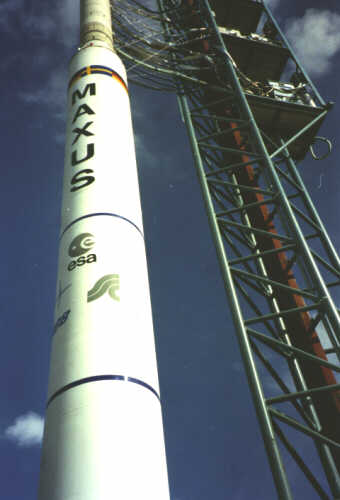
The European Space Agency’s
Maxus 5 sounding rocket mission was successfully launched on 1 April
2003 from
Esrange, north of
the Arctic Circle near Kiruna in northern Sweden. Maxus 5 reached an
apogee of 701 km and provided 12 minutes of microgravity. The payload
consisted of five microgravity experiments, all funded by ESA.
Our experiments, developped by Astrium, look at the effect of vibration
on the behavior of granular matter and supercritical fluids in
microgravity.
More about these experiments
will be avaible online soon (see a movie of our granular experiment
during microgravity)
The European Space Agency’s Maxus 5 sounding rocket mission was successfully launched on 1 April 2003 from Esrange, north of the Arctic Circle near Kiruna in northern Sweden. Maxus 5 reached an apogee of 701 km and provided 12 minutes of microgravity. The payload consisted of five microgravity experiments, all funded by ESA.

